Case study Analysis
*Please do the assignment within the 2-page limit asked for*
Your Case Study Analysis is related to the scenario provided. You need at least 3 primary references, points supported by citation, and associated current, primary references provided after each essay. Textbook readings are very helpful and will reinforce knowledge culled from readings, reflected in final exam questions.
Please ignore the rubric for this week only. There have been errors asking for point development not related to your case. You will earn full credit by developing the 4 points asked for as follows:
1.) The factors that affect fertility (STDs).
2.) Why inflammatory markers rise in STD/PID.
3.) Why infection happens.
4.) Explain the causes of a systemic reaction from infection (Lab values, Vital Signs, physical presentation, and exam).
Module 7: Case Study Analysis Assignment
Scenario 1: A 32-year-old female presents to the ED with a chief complaint of fever, chills, nausea, vomiting, and vaginal discharge. She states these symptoms started about 3 days ago, but she thought she had the flu. She has begun to have LLQ pain and notes bilateral lower back pain. She denies dysuria, foul-smelling urine, or frequency. States she is married and has sexual intercourse with her husband. PMH negative.
Labs: CBC-WBC 18, Hgb 16, Hct 44, Plat 325, Â Neuts & Lymphs, sed rate 46 mm/hr., C-reactive protein 67 mg/L CMP wnl
Vital signs T 103.2 F Pulse 120 Resp 22 and PaO2
99% on room air. Cardio-respiratory exam WNL with the exception of tachycardia but no murmurs, rubs, clicks, or gallops. Abdominal exam + for LLQ pain on deep palpation but no rebound or rigidity. The pelvic exam demonstrates copious foul-smelling green drainage with the reddened cervix and + bilateral adnexal tenderness. + chandelier sign. Wet prep in ER + clue cells and gram stain in ER + gram-negative diplococci.
The case reflects PID. One would suspect the patient is not forthcoming or the husband is not monogamous.
The factors that affect fertility (STDs).
Why inflammatory markers rise in STD/PID.
Why infection happens.
Explain the causes of a systemic reaction from infection (Lab values, Vital Signs, physical presentation, and exam).
Sample
The factors that affect fertility (STDs).
Sexually transmitted infections (STIs) can really affect someone’s ability to have kids. If left untreated, they can lead to pelvic inflammatory disease (PID), which is a major reason why some women can’t get pregnant. STIs like chlamydia and gonorrhea can leave scars and hurt the organs involved in making babies, like the uterus and fallopian tubes. This can cause problems like not being able to get pregnant, having pregnancies in the wrong place, and ongoing pain in the pelvis (McCance & Huether, 2019). Also, STIs can cause cervicitis, which makes it hard for sperm to reach an egg. In men, untreated STIs can cause infertility by blocking tubes or hurting parts of the reproductive system that make sperm move or count right. They can even cause swelling in the testicles, which can mess up fertility too.
Why inflammatory markers rise in STD/PID.
When someone has an STD/PID, certain signs of inflammation go up in their body. These signs include things like C-reactive protein and sedimentation rate, which show how much inflammation is happening (McCance & Huether, 2019). When the body fights an infection, it releases substances like cytokines and chemokines, which call in more immune cells to fight the infection. Then, these immune cells release even more substances that make the inflammation worse, which shows up as higher levels of inflammatory markers. In STD/PID, the infection usually starts in the lower genital area and moves up to the upper reproductive system, causing inflammation in places like the ovaries and fallopian tubes (Low & Broutet, 2017). This inflammation triggers a wider body response, making blood vessels more leaky and letting inflammatory stuff into the bloodstream. So, when someone with STD/PID has higher levels of these inflammatory markers, it shows the infection is serious and causing a strong body reaction.
Why infection happens.
Infections happen when harmful germs like bacteria, viruses, fungi, or parasites get into the body and start multiplying. These germs can enter the body in different ways, like through eating, having sex, breathing them in, or touching things that are contaminated. Once inside, these infections can damage tissues and organs by making toxins or causing the immune system to react (McCance & Huether, 2019). In this case, it’s likely the patient has pelvic inflammatory disease (PID), which is caused by bacteria moving from the vagina or cervix up to the upper reproductive system, causing inflammation in the uterus, fallopian tubes, and ovaries (Low & Broutet, 2017). Two common bacteria that cause PID through unprotected sex are Chlamydia trachomatis and Neisseria gonorrhoeae.
Explain the causes of a systemic reaction from infection (Lab values, Vital Signs, physical presentation, and exam).
When the body fights off an infection, it can cause a big reaction all over (Chakraborty & Burns, 2022). In lab tests, you might see a higher count of white blood cells (WBC) and signs of inflammation, like a higher sed rate and C-reactive protein level (McCance & Huether, 2019). Also, fever is common, and the heart might beat faster than usual. During a physical exam, signs of infection can show up, like pain and tenderness where it’s infected, and the area might be red, warm, and swollen. For pelvic inflammatory disease (PID), there could be smelly discharge, pain in the lower belly, and tenderness during a pelvic exam. A classic sign of PID is feeling extreme pain when the cervix is moved, called the chandelier sign. Tests like gram stain and wet prep might show bacteria, especially gram-negative diplococci, in PID cases.
References
Chakraborty, R. K., & Burns, B. (2022). Systemic inflammatory response syndrome. PubMed; StatPearls Publishing. https://www.ncbi.nlm.nih.gov/books/NBK547669/
Low, N., & Broutet, N. J. (2017). Sexually transmitted infections—research priorities for new challenges. PLoS medicine, 14(12), e1002481.
McCance, K. L. & Huether, S. E. (2019). Pathophysiology: The biologic basis for disease in adults and children (8th ed.). St. Louis, MO: Mosby/Elsevier.



